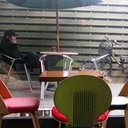Method and complications of ileocutaneous anastomosis for collection of ileal digesta in neonatal pigs.
Palabras clave
Abstracto
The purpose of our study was to develop a surgical method for collection of ileal digesta in neonatal (< 5 kg) pigs and to determine potential complications of the procedure. In 18 10-day-old pigs, we performed ileocutaneous anastomosis (ICA) via a right ventrolateral incision. The ICA was readily performed in these neonatal pigs; one pig died 24 hours after surgery because of intestinal volvulus. Pigs were monitored twice daily for development of post-operative complications. Ileal digesta were collected "free-catch" by using metabolism cages because attempts to use cannulas (diameter, 4 to 8 mm) and collection bags failed. To determine the effect of colon bypass on hydration, electrolytes, glucose, and serum enzyme activities, we collected serum biochemistry data before and 6 days after surgery. Changes in serum biochemical values included increased potassium, creatinine, total protein, albumin, and globulin and decreased ALP and glucose, but all values remained within normal ranges for neonatal pigs. ICA is tolerated well by neonatal pigs and is an easily learned and rapid technique for collection of ileal digesta. In addition, ICA is a useful alternative to "T-cannulas" and ileorectal anastomosis for nutrition research using neonatal pigs weighing < 5 kg.



